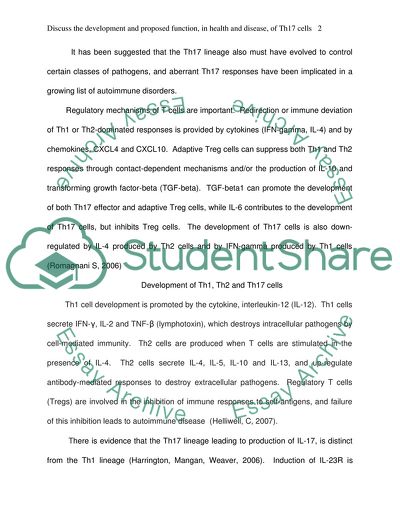Cite this document
(Th17 ells and Their Role Essay Example | Topics and Well Written Essays - 1750 words, n.d.)
Th17 ells and Their Role Essay Example | Topics and Well Written Essays - 1750 words. https://studentshare.org/biology/1707095-discuss-the-development-and-proposed-function-in-health-and-disease-of-th17-cells
Th17 ells and Their Role Essay Example | Topics and Well Written Essays - 1750 words. https://studentshare.org/biology/1707095-discuss-the-development-and-proposed-function-in-health-and-disease-of-th17-cells
(Th17 Ells and Their Role Essay Example | Topics and Well Written Essays - 1750 Words)
Th17 Ells and Their Role Essay Example | Topics and Well Written Essays - 1750 Words. https://studentshare.org/biology/1707095-discuss-the-development-and-proposed-function-in-health-and-disease-of-th17-cells.
Th17 Ells and Their Role Essay Example | Topics and Well Written Essays - 1750 Words. https://studentshare.org/biology/1707095-discuss-the-development-and-proposed-function-in-health-and-disease-of-th17-cells.
“Th17 Ells and Their Role Essay Example | Topics and Well Written Essays - 1750 Words”. https://studentshare.org/biology/1707095-discuss-the-development-and-proposed-function-in-health-and-disease-of-th17-cells.


